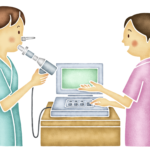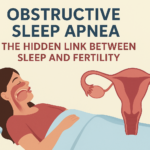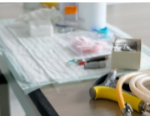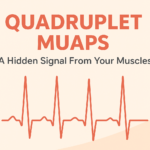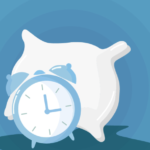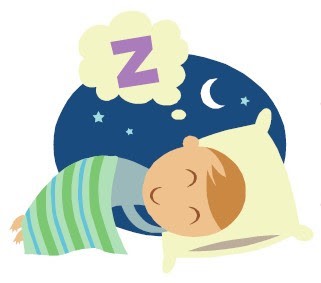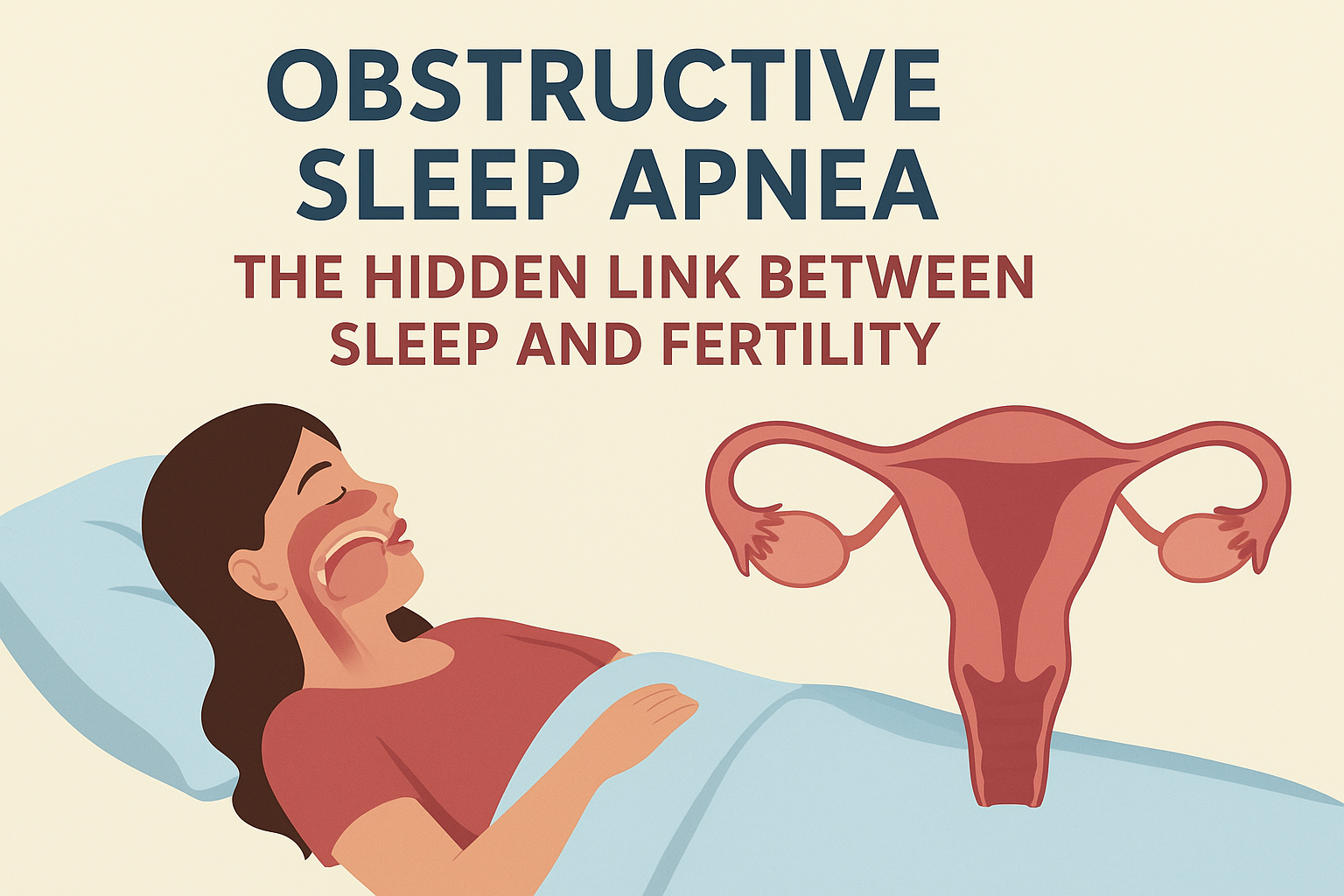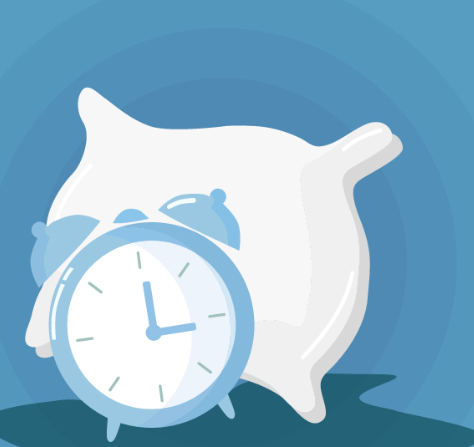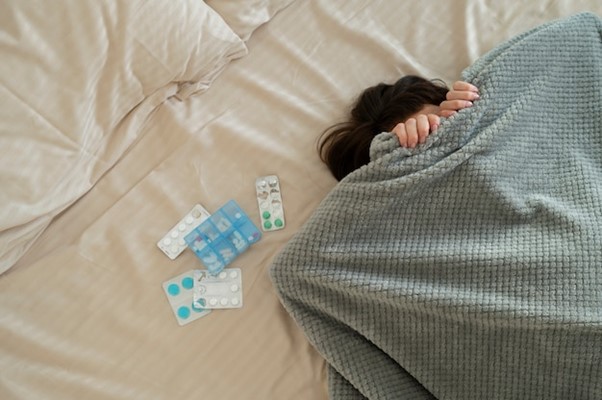By Dr.Manvir Bhatia & Varsha Lohia, 14/12/2022
DOWN SYNDROME
It is a genetic disorder caused by when abnormal cell division results in an extra full or partial copy of chromosome no 21. It is also known as trisomy 21 and the baby is born with an extra chromosome no 21. This extra chromosome causes a delay in a child’s physical and mental development.
CHARACTERISTICS FEATURES
- Small hands and feet, Protruding tongue, Low Muscle tone
- Small stature and short neck
- A small head that becomes flat from the back (brachycephaly)
- Almond-shaped eyes with skin that covers the inner eye (epicanthus folds)
- A single crease across the palm of each hand (normally there are two), short stubby finger (Clinodactyly)
- White flecks in the colored part of eyes (Brushfield spots)
- At birth children with Down syndrome usually are of average size but tend to grow at a slower rate and smaller than other kids of the same age.
TYPES OF DOWN SYNDROME
- Trisomy 21– the most common type in which every cell in the body has three copies of chromosome 21 instead of two.
- TRANSLOCATION DOWN SYNDROME– each cell has part of an extra chromosome or an entirely extra one.
- Mosaic down syndrome– the rarest type where only some cells have extra chromosome 21.
DIAGNOSIS
Diagnosis can be done by two methods:
- Screening test: indicates the chances that a mother is carrying a baby with Down syndrome. But these tests don’t tell for sure or diagnosis whether
- Diagnostic tests: These help in identifying or diagnosing whether your baby has Down syndrome.
- Screening tests during pregnancy
It includes the first trimester combined test and the integrated screening test.
- First trimester combined test: It can be done in two steps:
Blood test. It measures the levels of pregnancy-associated plasma protein-A (PAPP-A) and the pregnancy hormone known as human chorionic gonadotropin (HCG). Abnormal levels of both of these may indicate a problem with the baby.
Nuchal translucency test. In this test, an ultrasound is used to measure a specific area on the back of your baby’s neck. This is known as a nuchal translucency screening test. When abnormalities are present, more fluid than usual tends to collect in this neck tissue for the screening tests.
- Integrated screening test
It can be done in two parts during the first and second trimesters of pregnancy. The results are combined to estimate the risk that your baby has Down syndrome
- First trimester. Here, it includes a blood test to measure PAPP-A and an ultrasound to measure nuchal translucency.
- Second trimester. The quad screen measures your blood level, and four pregnancy-associated substances: alpha-fetoprotein, estriol, HCG, and inhibin.
2. Diagnostic tests during pregnancy
If your screening test results are positive then you might have a higher risk of developing a baby with Down syndrome, you might consider more testing to confirm the diagnosis.
Diagnostic tests that can identify Down syndrome include the following:
- Chorionic villus sampling (CVS). Here, cells are taken from the placenta and used to analyze the fetal chromosomes. This test is typically performed in the first trimester, between 10 and 13 weeks of pregnancy. The risk of miscarriage from a CVS is very low.
- Amniocentesis. A sample of the amniotic fluid surrounding the fetus is withdrawn through a needle inserted into the mother’s uterus. This sample is then used to analyze the chromosomes of the fetus. Doctors usually perform this test in the second trimester, after 15 weeks of pregnancy. It also carries a very low risk of miscarriage.
Comorbidity occurs with Down Syndrome
Specific types of psychiatric disorders:
- Dementia
The high risk of dementia in Alzheimer’s disease in adults with Down’s syndrome is principally due to the triplication and over-expression of the gene for amyloid precursor protein (APP) located on chromosome 21. The management of dementia in Down’s syndrome is generally similar to that for the general population. Once the diagnosis has been made, then there are different types of treatment are available
- Treat the underlying disease process – anticholinesterase (AChE) inhibitors (Donepezil, Rivastigmine, Galantamine) these drugs that can slow down the rate of deterioration of dementia in Alzheimer’s disease in both the general population and the Down’s syndrome population.
- Regression in young adults with Down’s syndrome
Young adults with Down’s syndrome present with cognitive decline, language regression, loss of adaptive and social skills, and behavioral changes.
- Schizophrenia
Prevalence rates of schizophrenia of around 3-6% have been demonstrated.
Some other comorbidity includes:
Heart defects. Around half the children with Down syndrome are born with some type of congenital heart defect.
Gastrointestinal (GI) defects. GI abnormalities occur in some children with Down syndrome. The risk of developing digestive problems, such as GI blockage, heartburn, or celiac disease, may be increased.
Immune disorders. Because of abnormalities in their immune systems, people with Down syndrome are at increased risk of developing autoimmune disorders.
Sleep apnea. Because of soft tissue and skeletal changes that lead to the obstruction of their airways, children and adults with Down syndrome are at greater risk of obstructive sleep apnea (OSA).
Obesity. People with Down syndrome have a greater tendency to be obese.
Spinal problems. Some people with Down syndrome may have a misalignment of the top two vertebrae in the neck (atlantoaxial instability).
People with DS are genetically at increased risk for diffuse senile plaque formation in the brain (a characteristic pathologic finding in Alzheimer’s disease brain), the super-imposed sleep fragmentation and intermittent hypoxia may accelerate the cognitive decline
TYPES OF SLEEP ISSUES FOUND IN DOWN SYNDROME PATIENTS
OSA is much more common and severe in patients with Down syndrome (DS) than in the general population.
Children with Down syndrome (DS) have a high prevalence of sleep problems, including behavioral sleep disturbances and obstructive sleep apnea.
The most common physical, breathing-related sleep problem is obstructive sleep apnea, 31% of infants with Down syndrome have obstructive sleep apnea. Obstructive sleep apnea is commonly responsible for restless sleep, snoring, and gasping as compared with typically developing children.
The prevalence of obstructive sleep apnea (OSA) in the pediatric population with Down syndrome (DS) is reported to be 45-76%.
Children with Down syndrome are at increased risk of sleep-disordered breathing (SDB). SDB is associated with significant morbidity including neurocognitive impairment, cardiometabolic disease, and systemic inflammation.
WHY SLEEP ISSUES OCCUR
The two common causes of sleep disturbances in children with Down syndrome are physical, breathing-related sleep problems and behavioral sleep problems
Breathing-related sleep problems, which are particularly common in children with Down syndrome when compared with children with other types of learning disabilities, and behavioral sleep problems, can be successfully managed using behavior modification techniques.
It occurs due to physical abnormalities associated with Down syndromes, such as narrower upper airways, larger tongues, and tonsils, looser muscle tone, and a propensity for being overweight.
Obstructive sleep apnea results from Hypotonia, Macroglossia, and midface Hypoplasia.
Progressive obesity is an additional risk factor.
A person’s normal breathing is disrupted during sleep because the wall of the throat relaxes and narrows or blocks the airway.
This high OSA prevalence further increases to 90% in adults with DS and is associated with more oxygen desaturation, hypoventilation, and sleep disruption
MRI studies have shown a combination of relatively large tongues, glossoptosis (backward movement of the tongue during sleep), and tonsil and adenoid regrowth are the most common causes of residual obstruction.
SYMPTOMS OF SLEEP ISSUES
- Fall asleep during driving
- Struggle to stay awake when inactive, such as when watching television or reading
- Have difficulty paying attention or concentrating at work, school, or home
- Have performance problems at work or school
- Often get told by others that you look sleepy
- Have difficulty with your memory
- Have slowed responses
DIAGNOSIS AND TREATMENT
Obstructive sleep apnea (OSA) is very common in children with Down syndrome and can have significant harmful effects on the child. It is hence critical to have an early diagnosis. Many studies have shown that parents are often unable to correctly predict whether their child with Down syndrome has a sleep problem. The only definitive way of diagnosing obstructive sleep apnea (OSA) is by performing a sleep study or polysomnography.
The American Academy of Pediatrics recommends that all children with Down syndrome have polysomnography (PSG), or a sleep study, by 4 years of age. Additional sleep studies can be done if a child with Down syndrome has any symptoms suggestive of obstructive sleep apnea (OSA) at any age.
The identification of clinical markers that may predict SDB is critical in facilitating early diagnosis and treatment, and ultimately, preventing morbidity.
Treatment
It involves upper airway surgery (primarily adenotonsillectomy) and continuous positive airway pressure (CPAP); however, various adjunctive therapies including intranasal steroids, pharyngeal exercises, dental appliances, along with weight-reduction strategies, nasal steroids, and oral leukotriene modifiers as adjunctive treatments are also available. Residual disease status post adenotonsillectomy is common, and further evaluation (eg, drug-induced sleep endoscopy [DISE]) is often needed. Novel therapies including hypoglossal nerve stimulation are emerging as effective treatments for refractory OSA.
Tonsil and Adenoid Removal
Some people with Down syndrome have relatively smaller jawbones, cheekbones, eye sockets, and narrow nasal passages. This can lead to airway obstruction when tonsils and adenoids are even slightly enlarged. Because of this, the most commonly used treatment is adenotonsillectomy. A sleep study should be repeated after this surgery to determine whether the sleep apnea was resolved.
Adenotonsillectomy does not always cure sleep apnea. Some individuals with Down syndrome experience OSA that continues even after surgery to remove tonsils and adenoids, known as “residual” OSA. MRI studies have shown a combination of relatively large tongues, glossoptosis (backward movement of the tongue during sleep), and tonsil and adenoid regrowth are the most common causes of residual obstruction.
CPAP/BiPAP Use
Continuous positive airway pressure (CPAP) or bi-level positive airway pressure (BiPAP) therapy is often used as a secondary treatment after surgery.
CPAP: A machine that delivers a steady stream of oxygenated air through a flexible tube to a mask sealed around a person’s nose and mouth. The airstream pushes against any obstructions, maintaining an open airway for breathing. They are used to treat OSA.
BiPAP: A machine that delivers a stream of oxygenated air at two pressures: an inhale pressure and an exhale pressure. It is used for individuals who cannot tolerate CPAP machines and to treat central sleep apnea.
Both machines are typically life-long treatments.
Hypoglossal Nerve Stimulation
Hypoglossal nerve stimulation (an implanted medical device that electrically stimulates tongue movement with breathing) is a relatively new treatment.
PREVENTION
There are some principles that help your child to fall asleep and stay asleep.
- Establish a clear and regular routine. Establish a routine set of activities surrounding bedtime.
- Reward and reinforce good behavior Reward systems that give stars or other positive tokens makes bedtime associated with less anxiety and positive emotions.
- Create a relaxing bedtime setting, Make his or her bedroom only for sleep, where it is kept cool, dark, and free of distractions.
To seek help or know more about brain health, you can visit the Neurology and Sleep Centre, the 1st sleep centre in the country accredited by the Indian Board of Sleep Medicine at L-23, Hauz Khas Enclave, New Delhi, Delhi-110016 (INDIA)
Or give a call at +91-11-46070321, +91-9643500270

